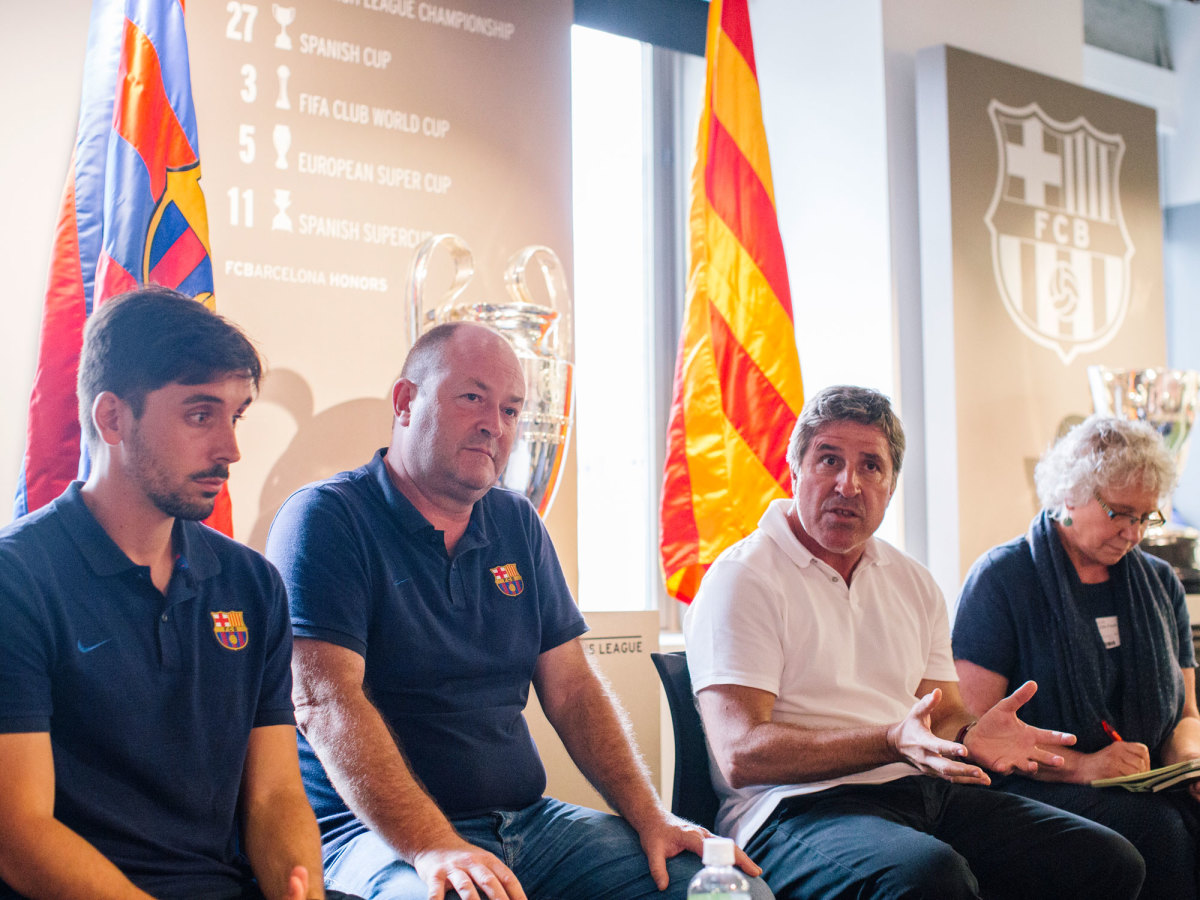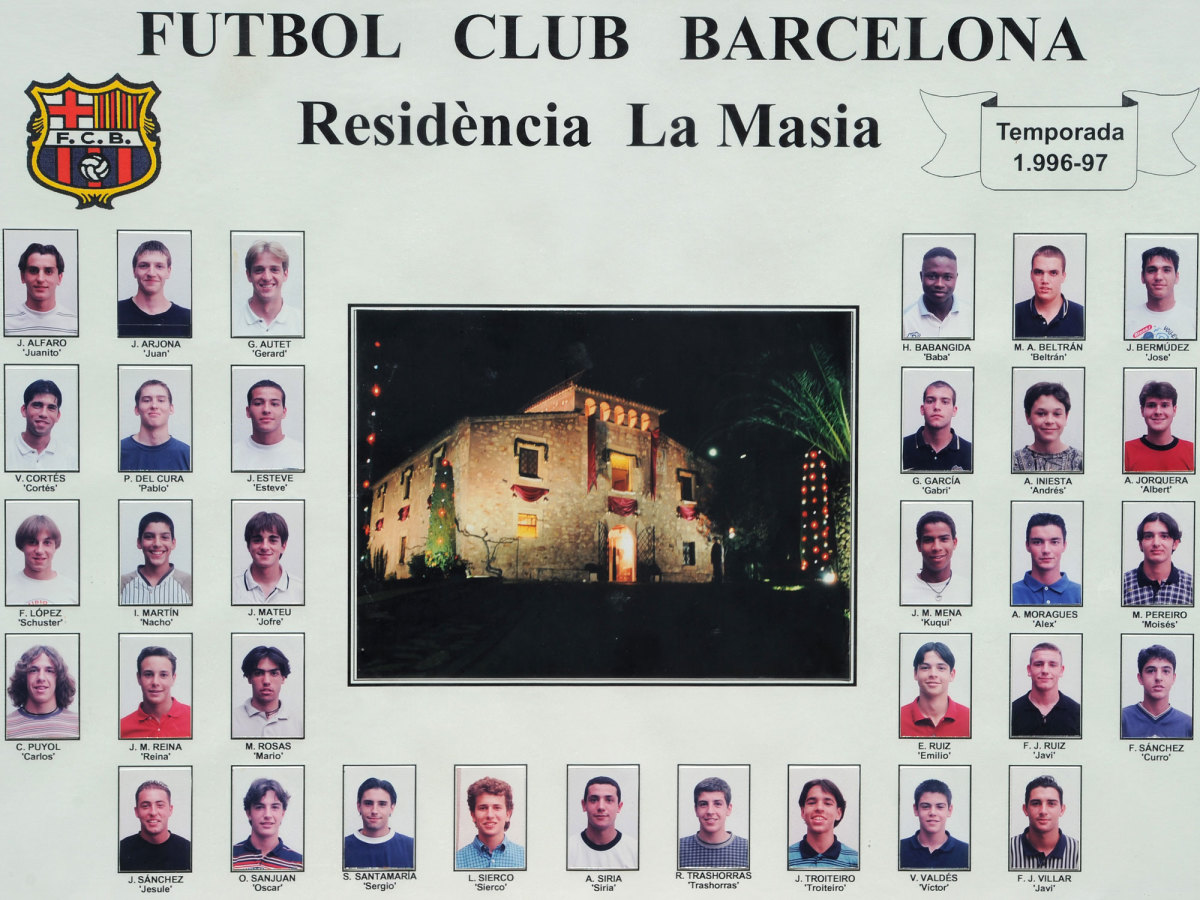FC Barcelona plants roots in USA with growing youth academy presence, motives

NEW YORK – Jordi Roura, director and head of youth football at FC Barcelona, sits inside the team’s U.S. offices in midtown Manhattan and attempts to explain the club’s philosophy in one sentence.
“The Barcelona way is, ultimately, all about possession. Attacking with possession and defending with possession,” he says, surrounded by members of his coaching staff and 15 youth players who participated in La Liga Promises third annual tournament in New Jersey this past weekend.
“So it’s more than just the physical aspect of a player, where–thanks to the foundations implemented by Johan Cruyff–ball possession is the ultimate protagonist.”
But for Barcelona, Roura’s visit to the U.S. is not just about the tournament. This fall, the Catalan club will commence running the first foreign residency in America, in partnership with Grande Sports Academy in Arizona, taking over the space Real Salt Lake previously used.
It will be called Barça Academy, and U.S.-based players will be able to learn the unique curriculum, as well as be educated on the cultural and academic aspects of the club. Instead of simply teaching coaches the “Barcelona way,” the club is sending over a technical director and a director of methodology, where players will learn everything a La Masia student learns.
What makes this different from the six other U.S. developmental academies under the Barcelona name is that Barça Academy is the first, full-time international soccer residency run by Barcelona. So just like La Masia, its players will be trained and educated entirely inside the camp until they turn 18.
It is holding official tryouts this weekend and July 12-14 with weekly camps running throughout the summer until August 5, according to Top Drawer Soccer.

In anticipation of the Barça Academy, Roura–relatively unknown to an American audience–led a discussion centered on the development of young players, Barcelona’s methods and the overall education of youth coaching. He himself was a member of La Masia in the early 1980’s, a few years before Cruyff’s introduction as head coach in 1988–a timely coincidence that would eventually define his career.
During his time as a youth player, Roura shared residence with Pep Guardiola, Tito Vilanova and Guillermo Amor and eventually made his senior debut thanks to Cruyff. In 1989, a knee injury against Milan in the European Super Cup halted his playing career and years later it would force him to early retirement. After coaching stints in Japan and two Catalan teams (Terrassa and L’Hospitalet), Roura became a member Pep Guardiola’s backroom staff in 2009 as a scout. In 2012, he ended up as assistant manager to his friend, the late Tito Vilanova, and actually ended the year as first-team manager, due to Vilanova’s illness. He was named director of youth in 2015, overseeing the youngest levels until they are eligible for Barça B.
Ronaldo's tax fraud charges, the Beckham Law and how his case compares to Messi, Neymar
In many ways, Roura is the ultimate example of the Barcelona way, where soccer and education should not be mutually exclusive. He reminds us of Masia360, the club’s mandate and platform on how to educate the young player.
The moment a young player enters Barcelona, he or she is given a tutor who helps the child with everything from learning how to handle social media to school homework. Every parent also participates and must be interviewed alongside the student before they can even take a step in the academy. This will also be done in the U.S.
“Once you join La Masia, you immediately have to follow the rules and everything that go with it,” he says. “From using Facebook to how you talk to a referee. We want to focus on creating the complete player.”
If you’re a fan of the beautiful game, then it’s fair to say that you’re familiar with the successes of Barcelona (24 La Liga titles, 20 European and world titles) as one of the most widely supported clubs in the world–both physically and on social media.
More than 200 million fans on social are a clear indication on how the Catalan club influences soccer culture, both on and off the field. From Neymar and Andres Iniesta to the incomparable genius of Lionel Messi, we are all acquainted with the blaugrana jersey and the club's prominent motto, Més que un club (More than a club.)
But if you’re an amateur player or youth coach, the club’s popularity goes beyond the adulation of their star players, as Barcelona represents the perfect model for youth development, where training is more than just physical instruction–it’s a philosophy.
And it’s this philosophy that has made La Masia as popular as the team itself.
As Jeré Longman wrote for the New York Times in 2011, “it differs from the standard American model of youth sports development, which is generally based in schools. And it differs, too, from the typical European soccer model, in which the best players often quit school around the age of 15 to devote their full attention to the sport.”

La Masia, essentially, is a school of fútbol, where methodology meets practice, and it’s this type of thinking that has helped players reach tremendous heights. In 2010, the academy became the first to feature three Ballon d'Or finalists in the same year (Iniesta, Messi and Xavi). That same year, seven players from the Spanish team that won the World Cup were from Barcelona.
While tactics and philosophies have evolved in recent years, La Masia remains a bedrock for the way that a youth player should be trained.
And it’s this type of thinking that attracts a growing, American soccer community, and vice-versa. Roura is not a complete soccer purist, as he understands that this U.S. move by Barça can help the club’s brand grow internationally, but he also stresses the fact that given the size and depth in diversity, America could also have its own Messi waiting to be discovered.
“Naturally, we want to expand the Barcelona brand and make our team be known even more across the world,” he says. “But we have to remember that before anything else, we’re a fútbol club first. The U.S. is a nation with an incredible amount of resources, infrastructure and opportunities, so why couldn’t we find talent here, why not?”
Why not, indeed.
